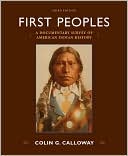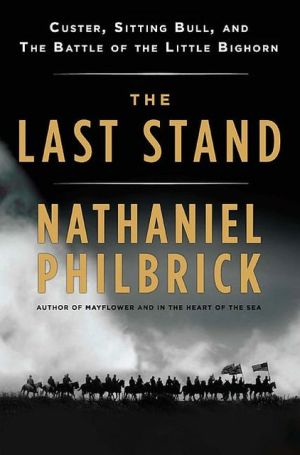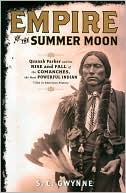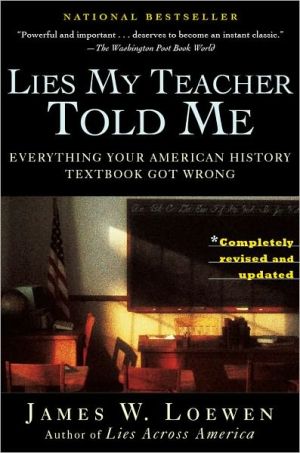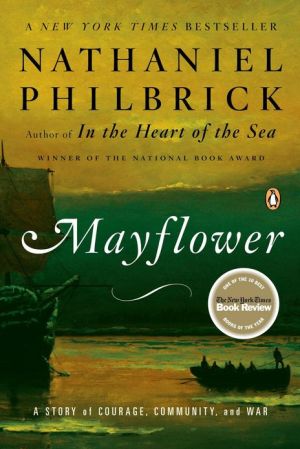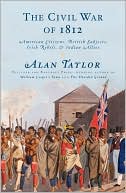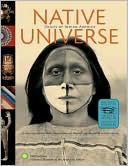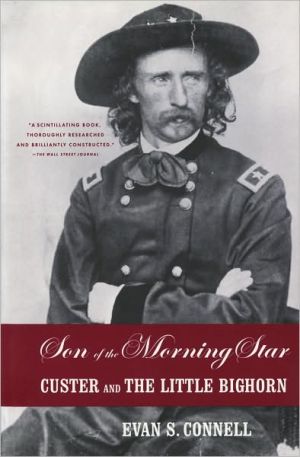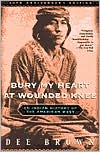First Peoples: A Documentary Survey of American Indian History
Search in google:
First Peoples distinctive approach to American Indian history has earned praise and admiration from its users. Created to fill the significant need for a survey text that acknowledges the diversity of Native peoples, respected scholar Colin G. Calloway provides a solid course foundation that still allows instructors to emphasize selected topics of interest to them and their students. The signature format of First Peoples strikes the ideal balance between primary and secondary source material, combining narrative, written documents, and visual documents in each chapter.
Note: Questions for Consideration precede every group of documents and follow every picture essay. Each chapter concludes with a list of Suggested Readings.Introduction. American Indians In American History Perspectives on the Past America's Master Narrative Indian History: A Shared Past Working with Sources A Note on Name Usage1. American History Before Columbus Determining What Came Before Precontact PopulationCreation Stories and Migration Theories]The Kennewick Man ControversyGlimpses of Precontact SocietiesWest Coast Affluence Columbia Plateau Fishers Great Basin Foragers First Buffalo Hunters of the Plains First Farmers of the Southwest Farmers and Mound Builders of the Eastern Woodlands Emerging Tribes and Confederacies Seaborne Strangers DOCUMENTS A Navajo Emergence StoryHastin Tlo'tse hee, The BeginningCorn and Game, Men and Women in Cherokee Society]Ka'nati and SeluThe Iroquois Great League of PeaceChiefs of the Six Nations, The Laws of the Confederacy (1900) PICTURE ESSAY Early American Towns and Cities]Aerial Photograph of the Ruins of Pueblo Bonito. Cliff Palace at Mesa Verde. Taos Pueblo. Bird's-Eye View of Cahokia Mounds, ca. AD 1100-1150. ]Cahokia Village Life. Indian Village of Secoton. Hochelaga.2. The Invasions of America, 1492-1680 First Contacts and Enduring Images Columbian Exchanges Changing New World LandscapesBiological Catastrophes Indians Confront the Spanish A Mission for Gold and GodConquest of the AztecsSearching for Other Empires North American Attempts to Colonize and Christianize The Pueblo War for Independence Indians Confront the FrenchCommerce and Conflict Pelts and Priests Indians Confront the English Securing a Beachhead in VirginiaMaking a New EnglandKing Philip's War DOCUMENTS A Narrative of the De Soto InvasionRodrigo Rangel, Account of the Northern Conquest and Discovery of Hernando de Soto (c. 1546) An Indian Explanation of the Pueblo RevoltDeclaration of the Indian Juan (1681)Jesuits in New FranceJean de Br beuf, The Mission to the Hurons (1635-37) A Mi'kmaq Questions French ÒCivilizationÓ]Chrestien LeClerq, ÒA Micmac Responds to the FrenchÓ (1677)Two Views of King PhilipIncrease Mather, From A Brief History of the Warr with the Indians in New England (1676)William Apess, From ÒEulogy on King PhilipÓ (1836)]PICTURE ESSAY Indian Images of the Invaders]Invasion of Northwestern Mexico. Spaniards on Horseback. ]Wampum Belt Commemorating a Treaty of Friendship between the Delaware Indians and William Penn. ]Seneca Antler Comb with an Effigy of a European. ]Haida Argillite Figure Group. The Last Supper.3. Indians in Colonial and Revolutionary America, 1680-1783Economic and Cultural ExchangesIndians in Colonial Society Colonists in Indian SocietiesThe Impact of the Fur TradeThe Cost of the Fur TradeWar and Diplomacy in Colonial AmericaThe Language and Lessons of DiplomacyWars for AmericaDivision within Tribal CommunitiesCaptives Taken, Captives ReturnedIndians and the American RevolutionAttempting to Draw a LineTaking SidesPeace TreatiesDOCUMENTS Franciscans and Caddos in Texas]Father Francisco Casanas de J sus Maria, Report from the Caddo Indians (1691)An English Treaty and a Penobscot Response]Treaty between the Abenaki Indians and the English at Casco Bay (1727)]Loron Sauguaarum, An Account of Negotiations Leading to the Casco Bay Treaty, 1727A Captive with the SenecasMary Jemison, A Narrative of Her Life (1824)The Revolution Comes to the Cherokees Henry Stuart, Report from Cherokee Country (1776)PICTURE ESSAY Painting the Past: Indians in the Art of an Emerging NationPenn's Treaty with the Indians. The Abduction of Daniel Boone's Daughter by the Indians. The Death of Jane McCrea. The Last of Their Race.4. American Indians and the New Nation, 1783-1838The New Nation ExpandsDeveloping an Indian PolicyRegulating an Indian -- and a Land -- PolicyIndians Confront ExpansionBuilding a United DefenseAccommodating and Resisting ChangeThe Last Phases of United Indian ResistanceIndian RemovalsRoots of Removal PolicyThe Cherokee ResistanceImplementing RemovalSurviving behind the FrontierDOCUMENTS The Treaty of Fort Finney with the Shawnees Richard Butler, The Journal of General Richard Butler at the Treaty of Fort Finney (1786)The Lewis and Clark ExpeditionMeriwether Lewis and William Clark, A Winter with the Mandans (1804-1805)Foundations of Federal Indian Law and a Native Response John Marshall, Cherokee Nation v. State of Georgia (1831) and Worcester v. Georgia 1832) John Ross, Reactions to Worcester v. Georgia: Letter to Richard Taylor, John Baldridge, Sleeping Rabbit, Sicketowee, and Wahachee (April 28, 1832) PICTURE ESSAY Indian Life on the Upper Missouri: A Catlin/Bodmer PortfolioThe Interior of the Hut of a Mandan Chief. Diagram of the Interior of an Earth Lodge. Mint, a Pretty Girl. Ptihn-Tak-Ochata, Dance of the Mandan Women. Pehriska-Ruhpa,Moennitarri Warrior, in the Costume of the Dog Danse.Mandeh-Pahchu, Mandan Man. Pigeon's Egg Head (The Light) Going to and Returning from Washington.5. Defending the West, 1830-90The Indian West before 1830Horses Transform the PlainsJostling for Position on the PlainsAt the Confluence of Guns and HorsesInvaders from the EastThe Ravages of Smallpox]Ethnic Cleansing in Texas and CaliforniaLosing the WestWars and Treaties, 1861-68Battles for the Black HillsDifferent Strategies for SurvivalThe End of Apache ResistanceReturn of the ProphetsDOCUMENTS Sixty Years of Kiowa HistoryThe Dohasan Calendar (1832-92) Protection and Exploitation in the State of California]An Act for the Government and Protection of Indians (1850)The Treaty of Fort Laramie and the Struggle for the Black Hills Council with the Brul Sioux, April 28, 1868 Council with the Oglala Sioux, May 24-25, 1868Council with the Miniconjous, May 27, 1868Treaty with the Sioux -- Brul , Oglala, Miniconjou, Yanktonai, Hunkpapa, Blackfeet, Cuthead, Two Kettle, Sans Arc, and Santee -- and Arapaho, 1868Chief Joseph's Plea for FreedomChief Joseph, ÒAn Indian's View of Indian AffairsÓ (1879)PICTURE ESSAY The Battle of the Little Big Horn in Myth and HistoryThe Death Struggle of General Custer. Custer's Last Fight. Custer's Last Stand. They Died with Their Boots On. Custer of the West. Little Big Man. Lakotas Fighting Custer's Command. Custer's Dead Cavalry.6. ÒKill the Indian and Save the Man,Ó 1870s-1930Americanizing the American IndianPolicies of DetribalizationResistance Takes New FormsThe Dawes Allotment Act (1887)Indian Territory Becomes OklahomaThe Educational Assault on Indian ChildrenRemoving Children from the Tribe Life in the SchoolsSurviving the Schools, Using the EducationThe Two Worlds of Ohiyesa and Charles Eastman A Changing World ÒI Still LiveÓ: Indians in American SocietyA New Generation of Leaders Soldiers and Citizens Indian Affairs on the Eve of the Great Depression DOCUMENTS Dismantling Tribes and Their Homelands Merrill E. Gates, From the Seventeenth Annual Report of the Board of Indian Commissioners An Indian View of the Indian BureauCarlos Montezuma, ÒWhat Indians Must DoÓ (1914)Sioux School Experiences Luther Standing Bear, ÒWhat a School Could Have Been EstablishedÓ (1933) Zitkala-Ša, ÒThe Melancholy of Those Black DaysÓ (1921) PICTURE ESSAY The Fort Marion ArtistsCheyenne Warrior Striking an Enemy. Gathering for a Dance. Courtship Scene. On the Parapet at Ft. Marion Next Day after Arrival. Distribution of Goods. ]Education of the Fort Marion Prisoners. Wohaw, Self-Portrait.7. From Indian New Deal to Self-determination, 1930-1980Shifting Policies and Indian ActivismJohn Collier and the Indian New Deal The Indian Reorganization Act Opposing and Disputing the IRA Indians and World War II Termination Indian Claims Commission Removing the Government's Trust Responsibilities RelocationDrowning HomelandsA Younger Generation RespondsUrban IndiansRise of Indian MilitancySiege at Wounded Knee Legacies of Wounded KneeMoving beyond Failed PoliciesFrom Paternalism to PartnershipSovereignty Goes to CourtThe Struggle for Natural Resources: Black Mesa and Laguna Pueblo DOCUMENTS Two Views of the Indian Reorganization Act John Collier, An ÒIndian Renaissance,Ó From the Annual Report of the Commissioner of Indian Affairs (1935) Robert Burnette and John Koster, ÒA Blueprint for Elected TyrannyÓ (1974) Indians in the Cities Anonymous, Life in the City: Chicago (c. 1970) Ignatia Broker, ÒBrought to a BrotherhoodÓ (1983)Documents of Indian MilitancyClyde Warrior, ÒWe Are Not Free,Ó from Testimony before the President's National Advisory Commission on Rural Poverty (1967)Proclamation to the Great White Father and to All His People (1969) ]Mary Crow Dog, ÒI Would Have My Baby at Wounded KneeÓ (1991)The Supreme Court and Tribal SovereigntySupreme Court of the United States, Oliphant v. Suquamish Tribe (1978) PICTURE ESSAY Indian Artists Depict Twentieth Century Indian Life]The Visit. Land of Enchantment. Reflections: Tribute to Our Iron Skywalkers. When Coyote Leaves the Reservation (A Portrait of the Artist as a Young Coyote). Osage with Van Gogh or Collector #5.8. Nations Within A Nation: Indian Country Since 1980Changes at the BIA]Self-Rule and Self-HelpNumbers, Identities, and ImagesCensus 2000: A Profile of Indian AmericaWho Is an Indian? ÒRecognizedÓ and ÒNonrecognizedÓ Tribes Stereotypes Old and New Choosing Homelands over WastelandsBuilding Prosperity in Indian Country: Gaming, a Devil's Bargain?Taking Back Education Building Well Nations Confronting Drugs and AlcoholBalancing Ways of HealingRepatriationIndian America in the Twenty-First CenturyDOCUMENTS Indian Leadership for the Modern WorldVine Deloria, Jr., ÒThe Popularity of Being Indian: A New Trend in Contemporary Indian SocietyÓ (1984)Wilma Mankiller, ÒReturning the BalanceÓ (1993) Tribal Colleges: Indian Education for Indian People The Carnegie Foundation, From Tribal Colleges: Shaping the Future of Native America (1989) Playing Indian and Fighting Over MascotsTim Giago, Mascots, Spirituality, and Insensitivity (1991) ]S. L. Price, ÒThe Indian WarsÓ (2002)A New Museum, A New Era?]W. Richard West, Jr., Remarks on the Occasion of the Grand Opening Ceremony, National Museum of the American Indian (2004)]PICTURE ESSAY History, Tradition, and Innovation in Contemporary Indian Art]Manly Heart Woman Stealing Back Horses. ]The Drinker. ]Pursuit of Civilization #4. ]When We Become Our Role Models #2. ]Twinkle Twinkle Little Star Now I Know Who You Really Are. ]The End of Innocence. ]Indian Men Wear Shirts and Ties. APPENDIX I: General Reference WorksAPPENDIX II: Film Resources] new to this edition
